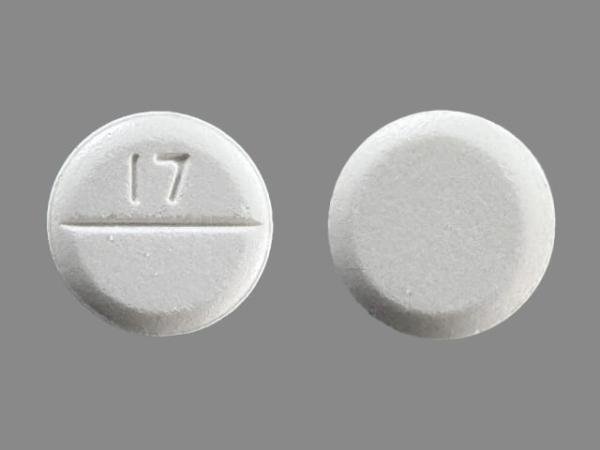Furosemide Side Effects
Medically reviewed by Drugs.com. Last updated on Oct 4, 2023.
For healthcare professionals
Applies to furosemide: compounding powder, injectable solution, intravenous solution, oral liquid, oral solution, oral tablet, subcutaneous kit.
Metabolic adverse events
- Common (1% to 10%): Hyponatremia, hypochloremia, hypokalemia, blood cholesterol increased, blood uric acid increased, gout
- Uncommon (0.1% to 1%): Thirst, glucose tolerance decreased
- Rare (0.01% to 0.1%): Anorexia, serum triglycerides increased
- Frequency not reported: Hyperglycemia, diabetes mellitus, hyperuricemia, metabolic alkalosis, hypocalcemia, hypomagnesemia, hypovolemia, dehydration, tetany, serum potassium decreased, Pseudo-Bartter syndrome, electrolyte disturbances, serum calcium decreased[Ref]
Hematologic
- Common (1% to 10%): Hemoconcentration
- Uncommon (0.1% to 1%): Thrombocytopenia
- Rare (0.01% to 0.1%): Eosinophilia, leukopenia, bone marrow depression
- Very rare (less than 0.01%): Hemolytic anemia, aplastic anemia, agranulocytosis
- Frequency not reported: Anemia, thrombophilia[Ref]
Genitourinary
- Common (1% to 10%): Urine volume increased
- Frequency not reported: Glycosuria, bladder spasm, urinary retention, urinary incontinence[Ref]
Dermatologic
- Uncommon (0.1% to 1%): Pruritus, bullous exanthema, rash, urticaria, purpura, erythema multiforme, exfoliative dermatitis, photosensitivity
- Rare (less than 0.1%): Lyell's syndrome and Stevens-Johnson syndrome, acute generalized exanthematous pustulosis, drug rash with eosinophilia and systemic symptoms
- Frequency not reported: Toxic epidermal necrolysis, bullous pemphigoid, sweating[Ref]
Gastrointestinal
- Uncommon (0.1% to 1%): Dry mouth, nausea, bowel motility disturbances, vomiting, diarrhea, constipation
- Rare (less than 0.1%): Gastric distress, acute pancreatitis
- Frequency not reported: Pancreatitis, oral and gastric irritation, cramping[Ref]
Renal
- Uncommon (0.1% to 1%): Blood creatinine increased, urea increased
- Rare (less than 0.1%): Interstitial nephritis, acute renal failure
- Frequency not reported: Nephrocalcinosis in premature infants, nephrolithiasis in premature infants, GFR decreased, tubulointerstitial nephritis[Ref]
Other
- Uncommon (0.1% to 1%): Deafness, fatigue
- Rare (less than 0.1%): Sensation of pressure in the head, dysacusis, asthenia, fever, febrile conditions, malaise
- Frequency not reported: Weakness, sudden death, hearing disorders, hearing loss, paradoxical swelling[Ref]
Cardiovascular
- Uncommon (0.1% to 1%): Cardiac arrhythmia
- Rare (less than 0.1%): Vasculitis
- Frequency not reported: Systemic vasculitis, necrotizing angiitis, orthostatic hypotension, thrombophlebitis, acute hypotension, circulatory collapse, persistent patent ductus arteriosus during the first few weeks of life in premature infants with respiratory distress syndrome, blood pressure decreased, shock, hypotension, thrombosis, orthostatic blood pressure decreased[Ref]
Ocular
- Uncommon (0.1% to 1%): Visual disturbance
- Rare (less than 0.1%): Myopia aggravated, blurred vision
- Frequency not reported: Blurred vision, xanthopsia[Ref]
Nervous system
- Rare (0.01% to 0.1%): Paresthesia, vertigo, dizziness, sleepiness, tinnitus, hyperosmolar coma
- Frequency not reported: Hepatic encephalopathy, headache, fainting and loss of consciousness, drowsiness, lethargy, sweet taste[Ref]
Musculoskeletal
- Rare (less than 0.1%): Lupus erythematosus activation or exacerbation, leg muscle cramps, chronic arthritis
- Frequency not reported: Muscle spasm, rhabdomyolysis[Ref]
Immunologic
- Rare (less than 0.1%): Severe anaphylactic or anaphylactoid reactions
- Frequency not reported: Allergic reactions[Ref]
Hepatic
- Very rare (less than 0.01%): Jaundice, hepatic ischemia, liver enzymes increased
- Frequency not reported: Abnormal hepatic function, cholestasis, bile flow increased, biliary tree distended[Ref]
Psychiatric
- Frequency not reported: Restlessness, psychiatric disorder, apathy[Ref]
See also:
References
1. (2007) "Product Information. Lasix (furosemide)." sanofi-aventis
2. Cerner Multum, Inc. "UK Summary of Product Characteristics."
3. Cerner Multum, Inc. "Australian Product Information."
Frequently asked questions
More about furosemide
- Check interactions
- Compare alternatives
- Pricing & coupons
- Reviews (122)
- Drug images
- Dosage information
- Patient tips
- During pregnancy
- Support group
- Drug class: loop diuretics
- Breastfeeding
- En español
Patient resources
Other brands
Professional resources
- Furosemide monograph
- Furosemide (FDA)
- Furosemide Injection (FDA)
- Furosemide Oral Solution (FDA)
- Furosemide Tablets (FDA)
Other brands
Related treatment guides
Further information
Furosemide side effects can vary depending on the individual. Always consult your healthcare provider to ensure the information displayed on this page applies to your personal circumstances.
Note: Medication side effects may be underreported. If you are experiencing side effects that are not listed, submit a report to the FDA by following this guide.

